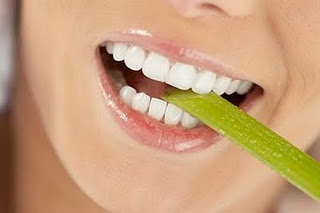We all want a whiter smile, and today, it can be accomplished safely, quickly, and effectively. While tooth whitening is the quickest and most cost-effective way of improving a healthy smile, there are so many options available for getting teeth their whitest, that it can be confusing to choose the best method.
The Basics
The most important and first step in any whitening procedure is to seek the advice of an oral health care professional for a thorough examination, assessment, and recommendation. A visit with your dental hygienist will result in the whitest teeth possible by making sure your teeth and mouth are healthy and that any oral health problems are addressed before you begin a whitening program.Additionally, surface stains and deposits that have collected on the teeth will be removed allowing for the best possible whitening. Finally, your dental hygienist will advise you of strategies that will help you maintain your new whiter smile once you have it. Basic tooth whitening involves two different types of whitening techniques: peroxide-based whitening and non-peroxidebased surface stain removal. Peroxide-based whitening products work deep within the tooth to remove discoloration resulting from years of accumulated stain and aging. In addition, peroxidebased products will slightly lighten hardto- reach surface stains.When the peroxide agent contacts the teeth it breaks down, and the resulting oxidation action “dissolves” internal and surface stains and makes the teeth appear whiter and brighter.
Professional Treatment Options
There are two types of professional whitening procedures your oral health professional can recommend—in-office treatments and professional whitening products for use at home. Professionally applied inoffice procedures give you immediately visible results with few negative side effects. With this type of treatment, the whitening agent is applied carefully to your teeth by the oral health professional and may be enhanced with a light or laser source.With
this type of procedure, your smile can be whitened up to five shades or more in as little
as one hour. Professionally dispensed options for home use also include specially designed
trays that are custom-fitted to your mouth and are worn for a certain amount of time during the day or overnight. These will whiten your teeth up to six shades or more over time in as few as two weeks. Either method—in-office procedures, or a professional product used at home—can
provide optimal whitening. The oral health care professional’s recommendation about which method is right for you will depend on your personal needs, such as time, cost, and the type of fillings or dental work, including tooth colored fillings or crowns you have. Those with tooth colored dental work in the front of the mouth need professional advice prior to whitening since
only natural teeth respond to whitening agents. Your dental hygienist will discuss options to provide uniform whitening for the best possible result.
Over-the-Counter Options
There are a variety of over-the-counter (OTC) peroxide-based products available and you may be tempted to use them to speed up the process. However, many of these product especially those advertised on television or over the Internet—are not safe, reliable, or effective. Some products may be runny or acidic and may be swallowed easily, or may damage your tooth enamel. Others use unproven means to deliver the whitening substance with uncomfortable, universal “boil-and-bite” mouth trays. Many of these products have not undergone the vigorous testing of professionally dispensed products. Other OTC peroxide-based products, such as whitening strips and paint-on solutions are safe for maintaining professionally delivered results or if you want to see if whitening is right for you; however, these products will not achieve the dramatic improvement available with professional options and should not be used if you have
tooth colored fillings that can be seen when you smile. In addition to procedures and products
designed specifically to whiten teeth, manufacturers have responded to the almost universal desire to have a whiter smile by including whitening agents in everyday products like toothpaste, floss, toothbrushes, and chewing gum. These may be useful for maintaining professionally whitened teeth and work by removing slight surface stains through physical-mechanical action, not unlike cleaning any surface with a cleaning agent. However, the shade improvement will be far less dramatic than with peroxidebased, professionally administered and supervised services.
A Final Word
Tooth whitening will continue to provide an excellent safe and cost-effective way to improve your smile. Your oral health care professional is pivotal in determining which teeth will whiten and the best product for your individual needs. Most important to having an attractive and healthy smile: See your dental hygienist on a regular basis to maintain your newly whitened smile and to maximize your oral health. Your dental hygienist will advise you on the best way to maintain your oral health as part of your total health, enhance your teeth cosmetically, keep your breath fresh, and assure a lifelong healthy smile.

No comments:
Post a Comment